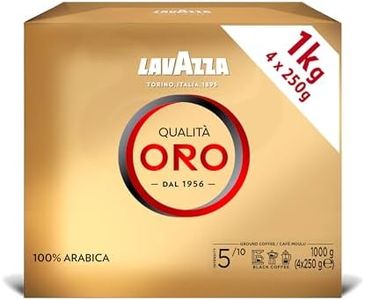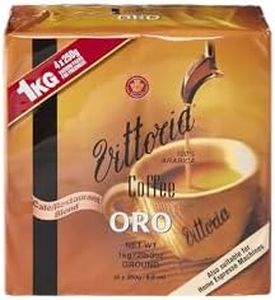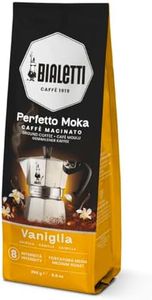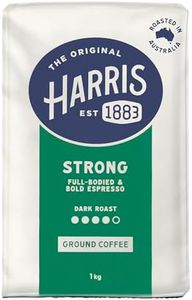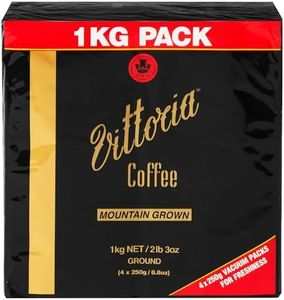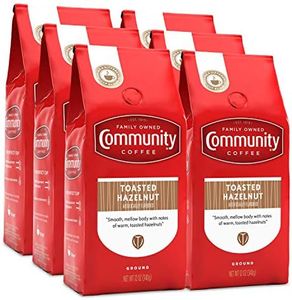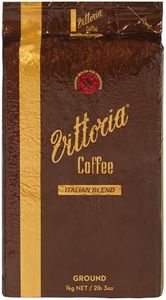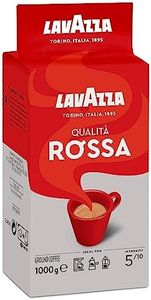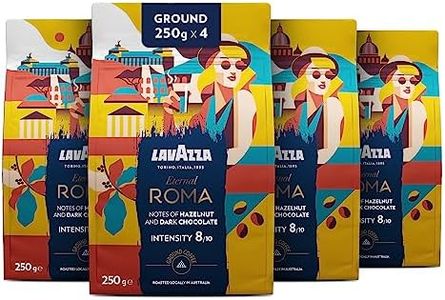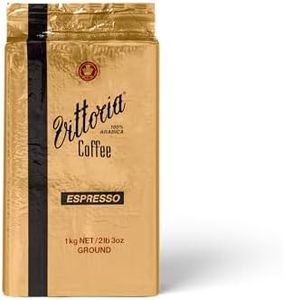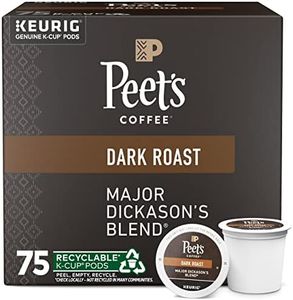We Use CookiesWe use cookies to enhance the security, performance,
functionality and for analytical and promotional activities. By continuing to browse this site you
are agreeing to our privacy policy
10 Best Ground Coffee
From leading brands and best sellers available on the web.Buying Guide for the Best Ground Coffee
Choosing the right ground coffee can make a big difference in your daily coffee experience. With so many options available, it's important to understand how different factors impact flavor, quality, and the brewing method. By focusing on key aspects such as grind size, roast level, origin, freshness, and packaging, you can select a ground coffee that matches your personal taste and brewing routine. Knowing a bit about these specifications will help you confidently pick a coffee that suits your preferences and lifestyle.Grind SizeGrind size refers to how fine or coarse the coffee grounds are, and it’s crucial because it directly affects how the coffee brews and tastes. Fine grinds extract flavor faster, suitable for espresso or Turkish coffee, while coarse grinds work best for methods like French press or cold brew that need longer steeping. Most ground coffee available falls into three main grind segments: coarse, medium, and fine. Medium grind is versatile and commonly used for drip coffee makers. The right grind for you depends on your preferred brewing method, so first decide how you’ll make coffee and match the grind size accordingly.
Roast LevelRoast level describes how long and hot the coffee beans have been roasted, impacting the final flavor and strength. There are typically three roast categories: light, medium, and dark. Light roasts keep more of the original bean flavor, have a brighter acidity, and often a lighter body. Medium roasts balance acidity and body, often delivering a smooth and more rounded taste. Dark roasts are richer, more robust, and can be slightly bitter or smoky. Select the roast level that matches your taste preference—go lighter if you enjoy subtle, complex flavors, and darker if you prefer bold, rich coffee.
Coffee OriginOrigin refers to where the coffee beans are grown, which affects the flavor profile due to differences in climate, altitude, and soil. Coffees from different regions—such as South America, Africa, or Asia—will taste distinct. For instance, African coffees are often fruity or floral, South American coffees might be nutty or chocolatey, and Asian coffees can be earthy or spicy. If you’re curious about exploring new flavors, try different origins to see which flavor notes appeal to you the most.
FreshnessFreshness is about how recently the coffee was ground and packaged, which is important because coffee loses flavor as it ages. Freshly ground coffee has a richer aroma and better flavor, while older coffee can taste flat or stale. Look for information on the packaging about roasting or grinding dates, or opt for brands that use airtight or vacuum-sealed packaging to lock in freshness. If you’re particular about taste, prioritize fresher options, and remember to store your coffee in a cool, airtight container once opened.
PackagingPackaging relates to how the ground coffee is sealed and presented. Good packaging preserves freshness and protects the coffee from moisture, air, and light. Common types include bags with resealable zippers, vacuum-sealed packs, or tins. Resealable or airtight packaging is best for maintaining flavor over time, especially if you don’t use coffee quickly. Choose packaging that suits how much and how often you drink coffee to ensure each cup tastes fresh.
